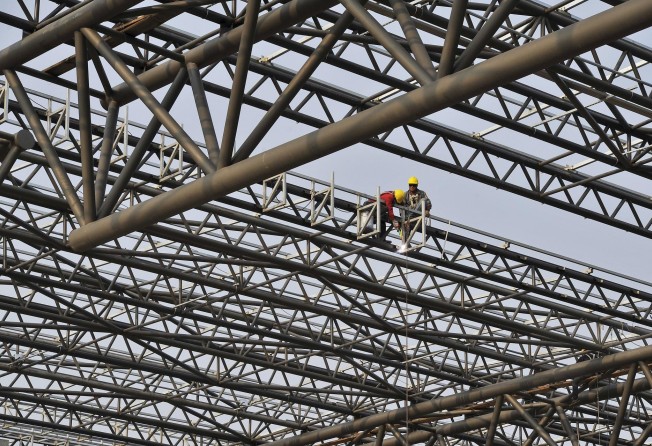China's overbuilding produces white elephants - like empty airports

When officials reopened the airport on the sparsely populated Dachangshan island off the mainland's northeast coast after a US$6 million refurbishment in 2008, they planned to welcome 42,000 passengers in 2010 and another 78,000 in 2015.
However, fewer than 4,000 passengers - or just a 10 a day - passed through its gates in 2013, data from the civil aviation authority showed.
Since February last year, China has approved at least 1.8 trillion yuan (HK$2.3 trillion) in new infrastructure projects to counter a slowing economy. The approvals come just as the full costs of the underused airports, expressways and stadiums built during the last spending binge are beginning to emerge.
While construction firms profited from the boom, it saddled provincial governments with US$3 trillion worth of debt, with the most over-exuberant seeing their local economies weaken and become imbalanced towards the building sector.
The economy in Liaoning province, which includes Dachangshan island, was one of the slowest growing last year - gross domestic product expanded 5.8 per cent, far undershooting its 9 per cent target.
"There needs to be serious discussions over the economic rationality of large-scale engineering projects. Do we really need this many high-speed lines and airports?" said Lu Dadao, an academic at the Chinese Academy of Sciences.
A government official and economist estimated in November that the country has wasted about 42 trillion yuan on "ineffective investment" in the five years from 2009, with the problem worsening in the last two years.
Despite its modern airport, finding a flight to Dachangshan island is not easy. Staff at Zhoushuizi International Airport in the port city of Dalian, the destination of the sole published route, said flights to the Changhai airport on Dachangshan have not operated for the last six months.
Undeterred, the Dalian government plans to spend 1.48 billion yuan this year to expand the airport to accommodate 250,000 by 2020, as part of its latest drive to spur the economy and to turn the fishing outpost of about 30,000 inhabitants into a holiday destination, according to local media reports.
Wu Hong, an official from Dalian Changhai County's publicity department, said the airport expansion was meant to keep up with the island's development, adding that it received 1.1 million tourists last year.
"In gross domestic product terms, none of this is bad. It generates growth, one way or another," said J Capital Research analyst Susannah Kroeber, who has been tracking China's infrastructure build-out since 2012.
"But is it useful and an efficient use of your resources? Absolutely not."
Many local governments set up corporations to obtain loans for massive infrastructure and real estate projects, skirting rules preventing direct borrowing while amassing a debt pile now seen as a key risk to the economy.
The results include the world's longest ocean-crossing bridge near the city of Qingdao and the highest railway track, which connects Qinghai province to Tibet.
New districts built to house thousands have also been built, with some, such as Ordos in Inner Mongolia and Yujiapu in Tianjin, turning into ghost cities as the mainland's residential property market slows.
While little official information is available on user numbers, the mainland's expressways bled US$10 billion in 2013 on toll revenue shortfalls.
China Railway, which oversees the expansion of the world's longest railway network, is now 3.4 trillion yuan in debt, it said in September.